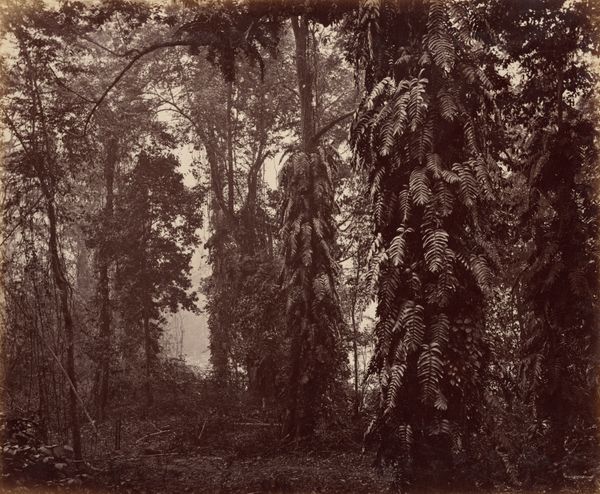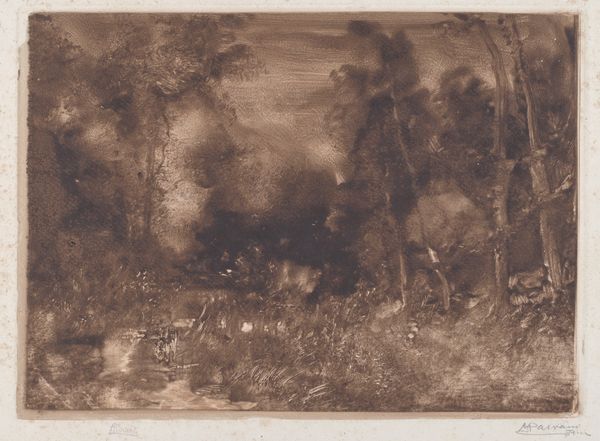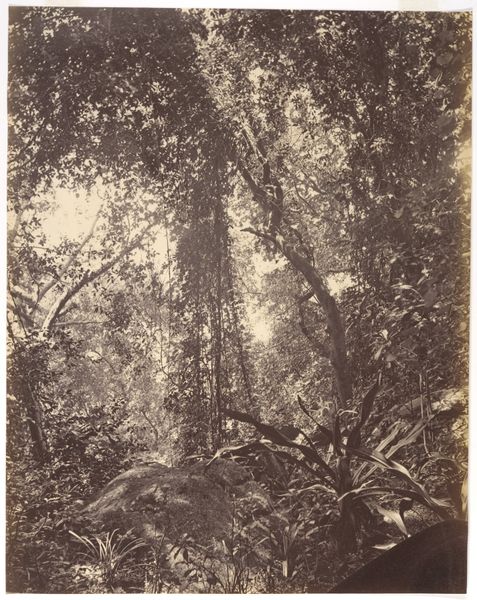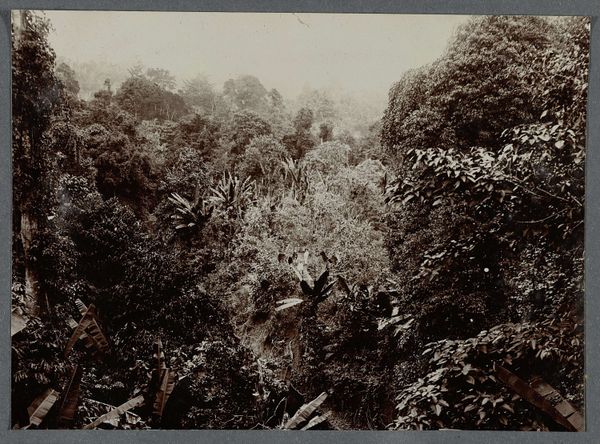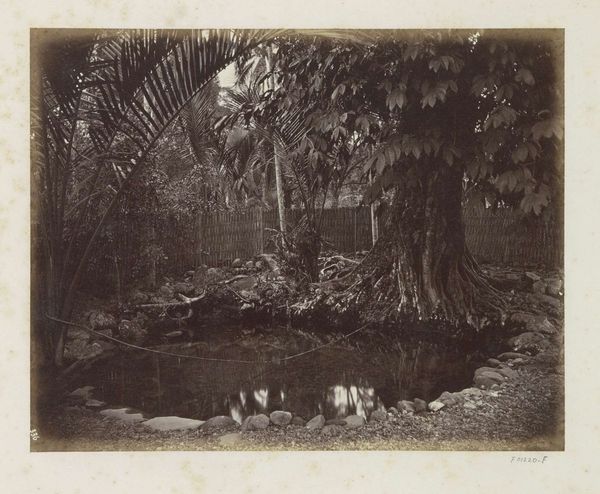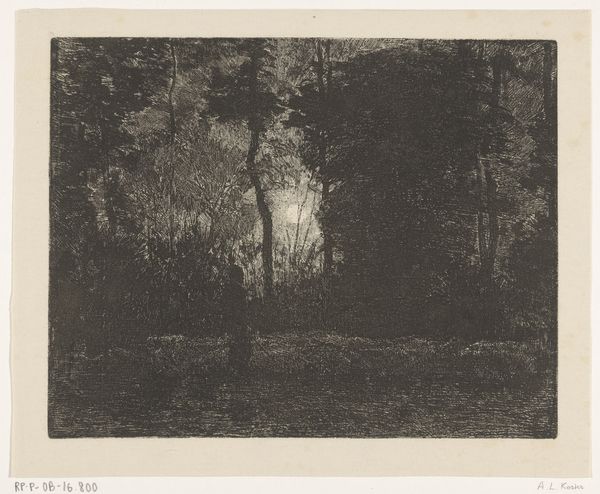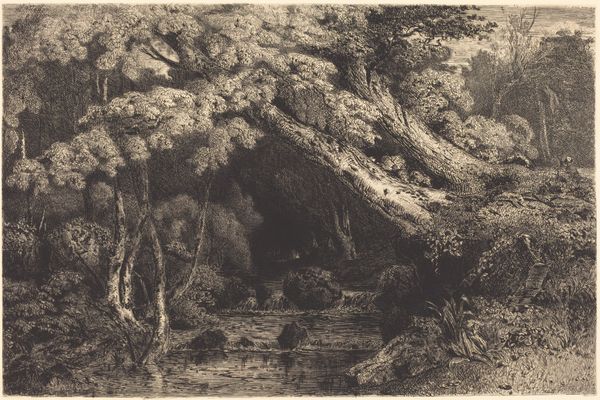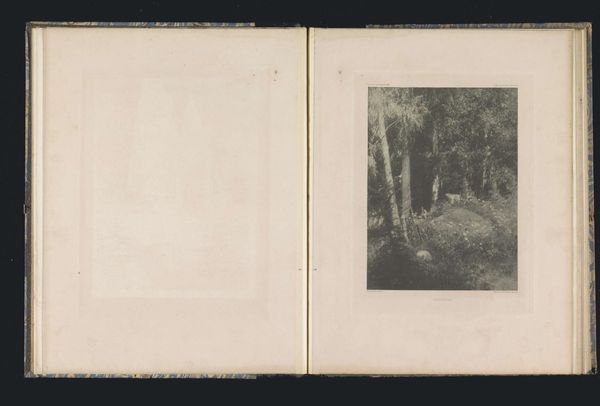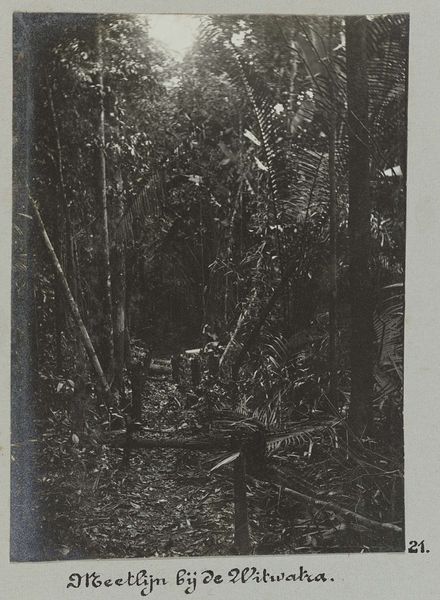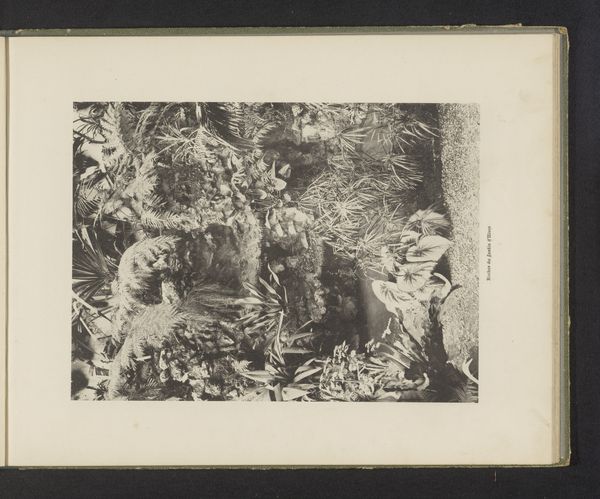
Dimensions: height 109 mm, width 168 mm
Copyright: Rijks Museum: Open Domain
Curator: Looking at "Palmenkas in de Palmentuin van Frankfurt," a photogram by Johann Friedrich Stiehm made after 1871, I'm struck by its atmospheric quality. The tonal range, leaning heavily towards sepia, evokes a sense of both age and timelessness. What are your initial thoughts? Editor: It feels dreamlike, almost surreal. The hazy, muted tones make it difficult to distinguish individual forms. There's a palpable sense of being enveloped by nature, a feeling of dense, humid air. I'm curious about how Stiehm might be framing nature, here, to create a pictorialist perspective? Curator: Well, considering pictorialism's rise, Stiehm's manipulation of the photographic process reflects the movement's desire to elevate photography to the level of fine art. The soft focus and printing techniques suggest he aimed to create an emotional response. How does it play with class, with privilege? Was the Frankfurt Palm Garden, Palmentuin, intended for a particular segment of the population? Editor: That's an interesting angle to pursue. Public gardens often served as carefully curated spaces reflecting and reinforcing social hierarchies. If this garden was predominantly visited or funded by the elite, Stiehm's photograph, in its soft, romanticized portrayal, could inadvertently legitimize those power structures. I’d also be looking at the socio-economic implications of accessibility to these types of recreational environments in the period Stiehm took this photograph. Curator: Absolutely. Furthermore, the lack of any human presence makes me wonder about representation. Is this a romantic vision of untamed nature, or does the absence subtly erase the labor and the social contexts behind maintaining a cultivated landscape? Were women and BIPOC peoples involved in cultivating this natural setting? And if so, what does their exclusion from this frame, say? Editor: A really astute observation! It highlights a problematic trend in landscape art – often sanitizing the environments presented by removing any visual indication of exploitation or of colonized and otherwise marginalized peoples labor. What do you think we should share as a closing thought on this photo and why should contemporary visitors think of it differently? Curator: Perhaps, we should leave our visitors to consider the hidden narratives within the photograph. Stiehm invites us to appreciate a tranquil landscape, but, also calls on us to reflect on the structures that defined the Palm Garden in its time.
Comments
No comments
Be the first to comment and join the conversation on the ultimate creative platform.
